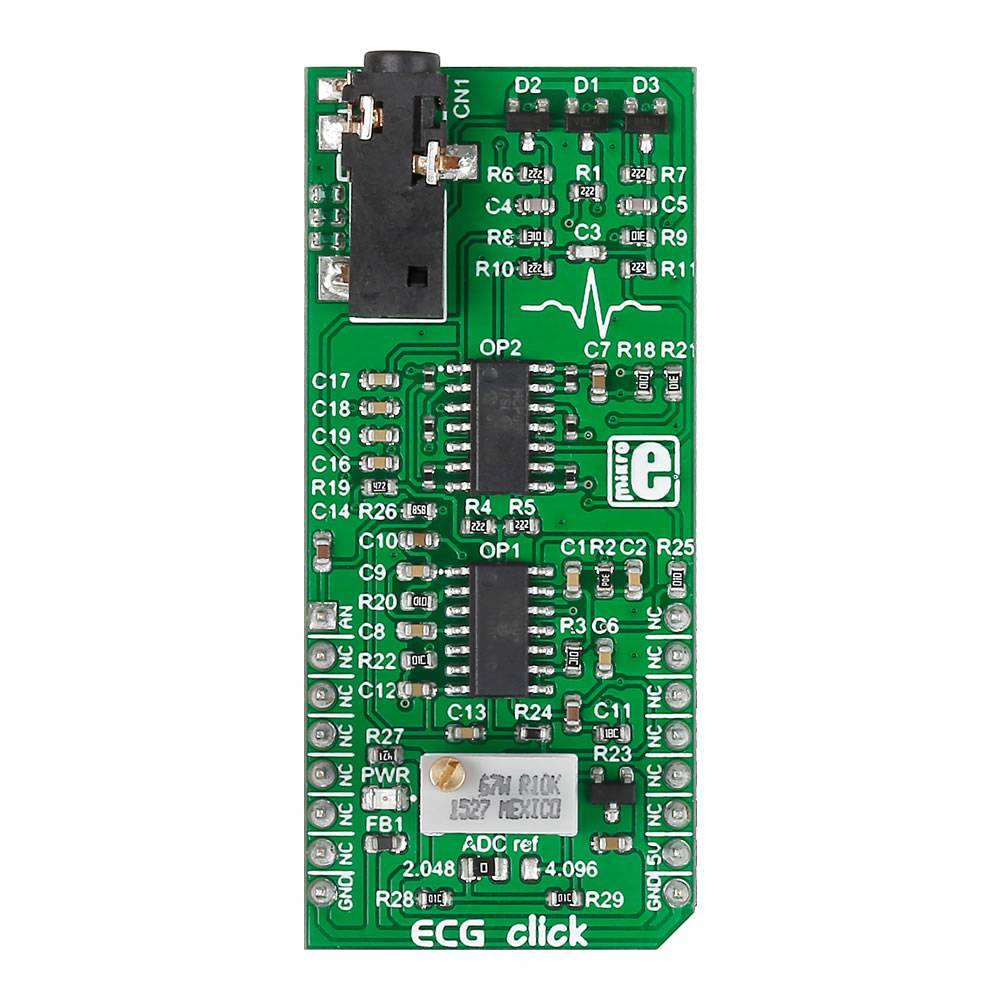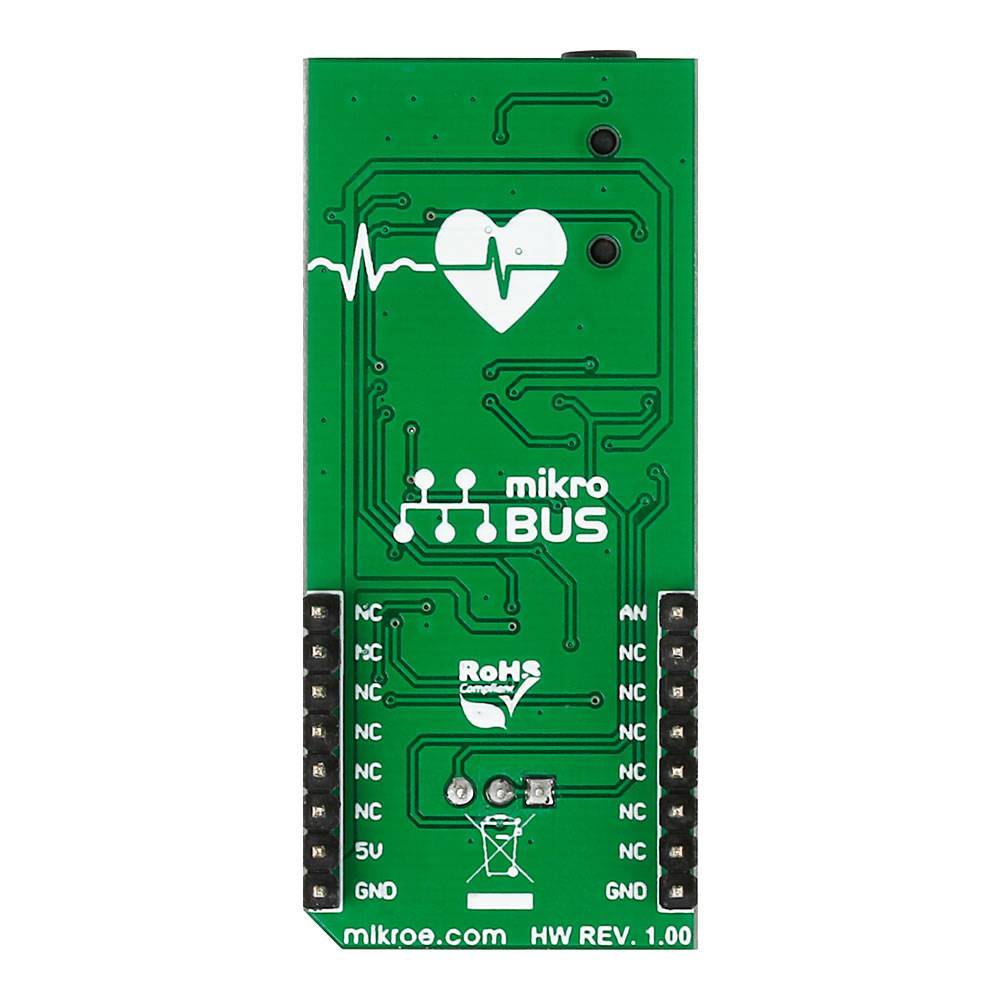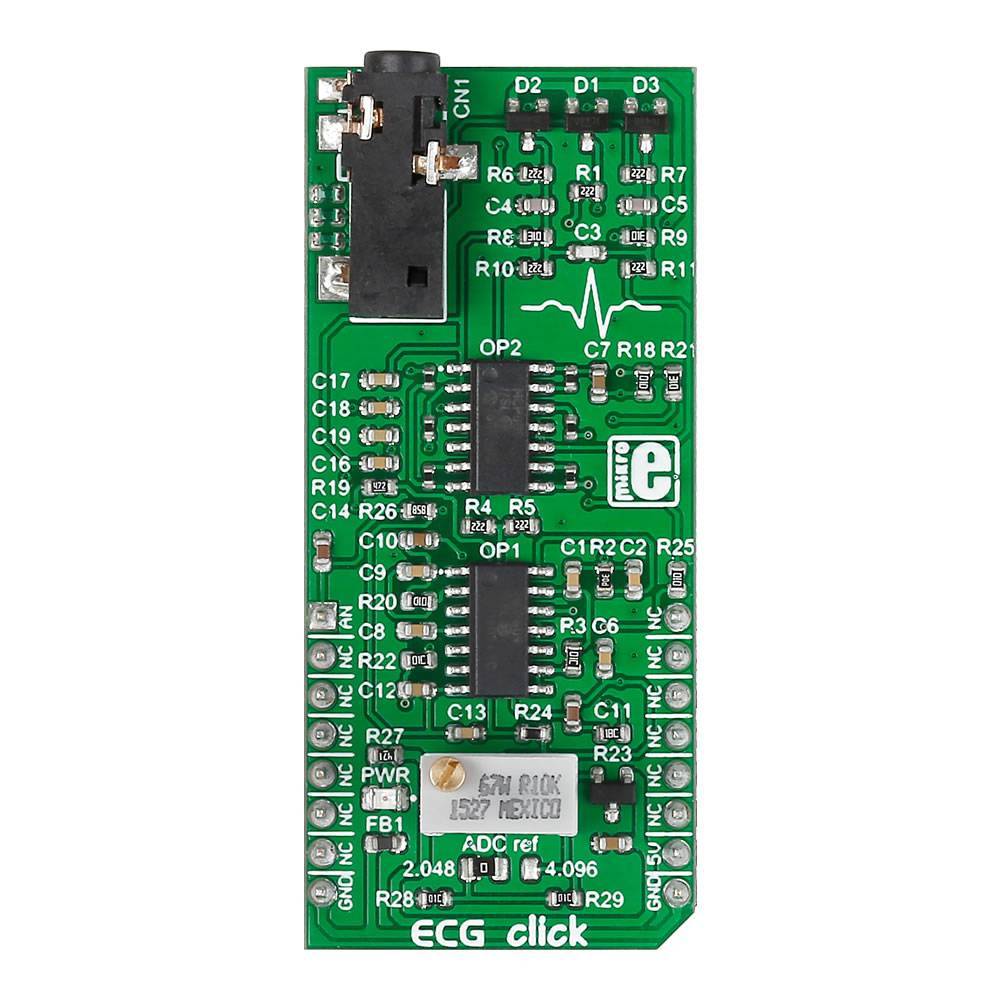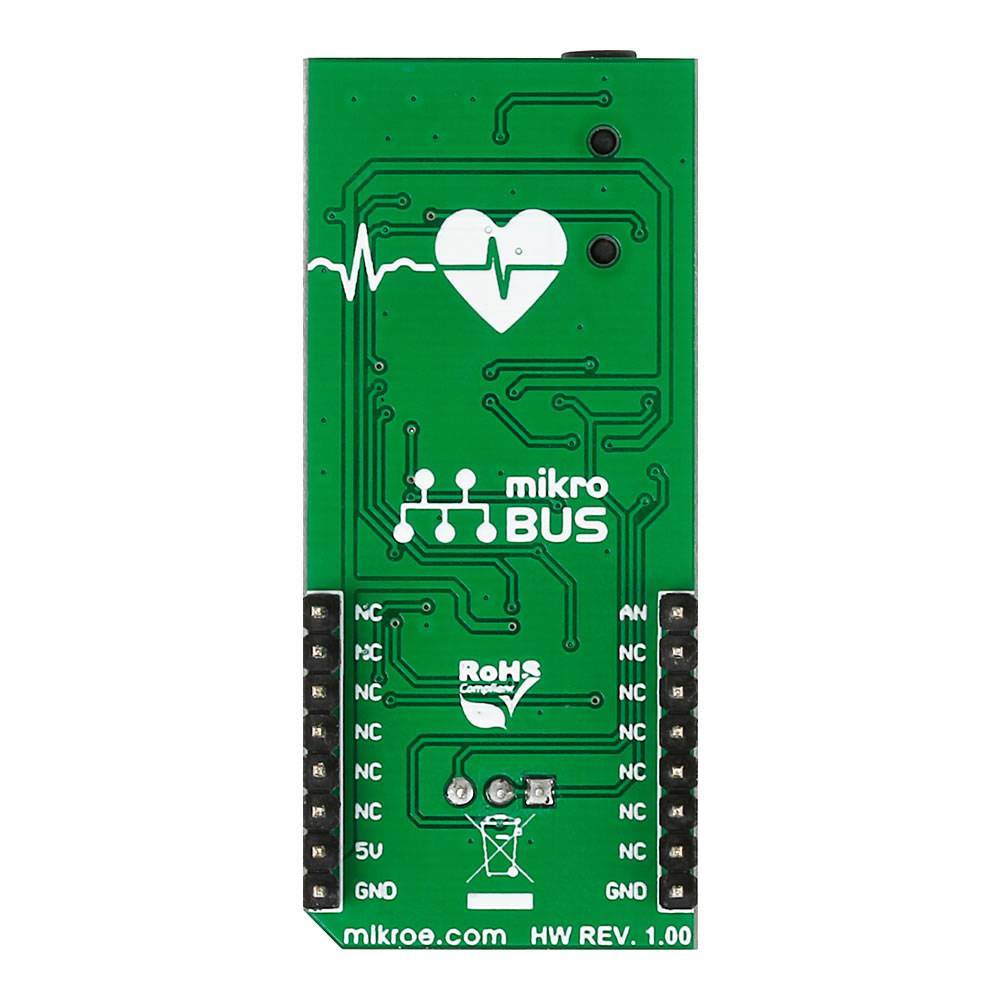

Overview
The ECG Click Board™ is an ECG (or EKG) machine on a Click Board™. It measures the electrical activity of a beating heart through electrodes taped to the skin. The board requires little setup, and the final measurement results can be displayed as an Electrocardiogram using a free Windows app.
Downloads
Das ECG Click Board™ ist ein EKG-Gerät auf einem Click Board™. Es misst die elektrische Aktivität eines schlagenden Herzens über auf die Haut geklebte Elektroden. Das Board erfordert nur wenig Einrichtung und die endgültigen Messergebnisse können mithilfe einer kostenlosen Windows-App als Elektrokardiogramm angezeigt werden.
| General Information | |
|---|---|
Part Number (SKU) |
MIKROE-2455
|
Manufacturer |
|
| Physical and Mechanical | |
Weight |
0.025 kg
|
| Other | |
Country of Origin |
|
HS Code Customs Tariff code
|
|
EAN |
8606015079011
|
Warranty |
|
Frequently Asked Questions
Have a Question?
Be the first to ask a question about this.


